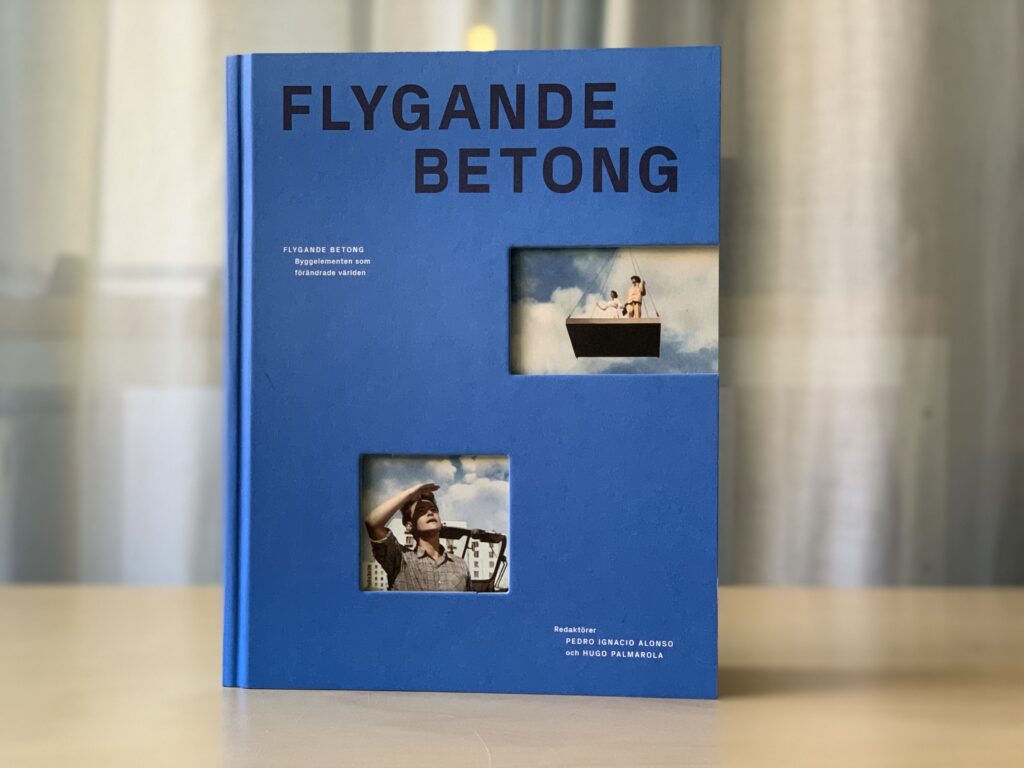ArkDes is currently closed for refurbishment.
Flying Panels
/https%3A%2F%2Farkdes.se%2Fwp-content%2Fuploads%2F2024%2F03%2FFlying-Panels-scaled.jpg)
Flying Panels: How Concrete Panels Changed the World
Flying Panels is a major exhibition about how prefabricated concrete panels changed the world.
Housing billions of people, apartment blocks made of concrete panels are the most common buildings in the world. Alongside air travel, the space programme and nuclear power, the concrete panel was once considered an innovation that heralded a new, rational future for society and the world. In the second half of the 20th Century, the heroic image of a flying panel soaring across the sky appeared in paintings, photographs, drawings, films, posters, cartoons, children’s toys and opera sets.
Flying Panels is the result of over a decade of research by Pedro Ignacio Alonso and Hugo Palmarola. The exhibition looks at how concrete panels emerged, spread, were embraced by different nations, and have been adapted for every imaginable climate and context. It also shows us how the panel was used as a symbol of the future across the political and artistic spectrum, and ultimately how panels were satirised, derided and even blamed for the problems of the late 20th Century city.
The exhibition compiles films, posters, propaganda, cartoons, toys, opera sets and other forms of popular culture alongside the catalogue and global mapping of concrete panel systems used across the world. By presenting the longstanding work of Erik Stenberg (Associate Professor at the KTH School of Architecture) on the Million Programme era, the exhibition also outlines the D4 Group, an association of Swedish pioneers who advocated for prefabricated concrete construction methods and developed the technology in Sweden and abroad.
-
:blur(9)/https%3A%2F%2Farkdes.se%2Fwp-content%2Fuploads%2F2024%2F02%2Farkdes_flygande_betong_165lev-cred.-Kristofer-Johnsson-scaled.jpg)
Photo: Kristofer Johansson. 2019.
/https%3A%2F%2Farkdes.se%2Fwp-content%2Fuploads%2F2024%2F02%2Farkdes_flygande_betong_079lev-cred-Kristofer-Johnsson-scaled.jpg)
/https%3A%2F%2Farkdes.se%2Fwp-content%2Fuploads%2F2024%2F02%2FBi3670_rgb_arkdes_01.jpg)
/https%3A%2F%2Farkdes.se%2Fwp-content%2Fuploads%2F2024%2F02%2Farkdes_flygande_betong_147lev-cred-Kristoffer-Johnsson-scaled.jpg)
/https%3A%2F%2Farkdes.se%2Fwp-content%2Fuploads%2F2024%2F02%2Farkdes_flygande_betong_129lev-cred-Kristofer-Johnsson-scaled.jpg)
/https%3A%2F%2Farkdes.se%2Fwp-content%2Fuploads%2F2024%2F02%2Farkdes_flygande_betong_012lev-Cred-Kristofer-Johnsson-kopia-scaled.jpg)
Publication
A publication accompanies the exhibition with essays by Michael Abrahamson, Jimena Castillo, Adrian Forty, Boris Groys, Maria Lind, Jennifer Mack, Philipp Meuser, Natalya Solopova, Erik Stenberg, and Christine Varga-Harris.

Curators: Pedro Ignacio Alonso and Hugo Palmarola
Curator at ArkDes: Carlos Mínguez Carrasco
Exhibition Producer: Sofia Liljergren
Exhibition Design: Note Design Studio
Graphic Design: Brand Union
Lightning and Audiovisual Technical Design: Transpond
Content Developer: José Hernández
Multimedia Development: Francisco Hernández
Content Development Team: Joaquín Broquedis, Tatiana Carbonell, Yazmín Jiménez, Daniela Manzur, Tamaya Sapey-Triomphe
Research Sweden: Erik Stenberg, Erik Sigge
Research USA: Michael Abrahamson
This exhibition is made possible with the support of:
KTH Royal Institute of Technology, School of Architecture, Pontificia Universidad Católica de Chile (PUC), International Artists Studio Program (Iaspis), Direction of Cultural Affairs (Dirac) at the Ministry of Foreign Affairs of Chile, and the Embassy of Chile in Sweden
Thanks to the following lenders:
Canadian Centre for Architecture; Chicago Opera Theatre; Department of Architecture and Urban Planning, Ghent University; Erik Stenberg personal collection; Forbach City Council; Emily Harvey Foundation; Moderna Museet; Museum of the Chilean Toy; Mosfilm; Philipp Meuser personal collection, Rockefeller Foundation Bellagio Center; Sergio Larraín García-Moreno Archive at the Faculty of Architecture, Design and Urban Studies, Pontificia Universidad Católica de Chile; Skarne family Collection; Soyuzmultfilm; Stockholms Stadsarkiv; St. Petersburg State Museum of Theatre and Music; Tretiakov Gallery; Stockholm University Library
With special thanks to:
Michael Abrahamson, Petr Antonov, Felipe Aravena, Hernán Bascuñán, Luis Eduardo Bresciani, Juan Candia, Yongquan Chen, Rika Devos, Ivar Duvhök, Alexander Gronsky, Boris Groys, Philipp Meuser, Germán Perotti, Nolberto Salinas González, Ignacio Sánchez, Rodrigo Ramírez, Juan Antonio Santis, Thérèse Schluter, Filip Skarne, Natalya Solopova, Erik Stenberg, Martín Tironi, Alice Thiberg, Mario Ubilla, Sonja Vidén, and Angélica Zegers

/https%3A%2F%2Farkdes.se%2Fwp-content%2Fuploads%2F2024%2F02%2Farkdes_flygande_betong_165lev-cred.-Kristofer-Johnsson-scaled.jpg)